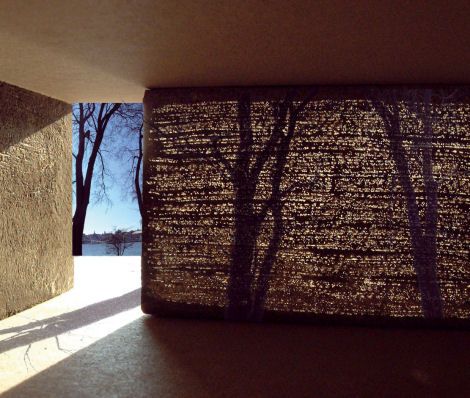
Light Transmitting Concrete
Description:
Building Material Category: Cement and Allied Products
Building Component Type: Wall, Roof and Floor
Alternative for Conventional Building Material: Traditional concrete blocks or panels. Conventional glass or acrylic panels used for daylighting
Introduction: Light transmitting concrete, also known as translucent or transparent concrete, is a cutting-edge building material that integrates optical fibers or other light-conducting elements within the concrete matrix to allow natural light to pass through. This innovative material combines the structural strength and durability of conventional concrete with the aesthetic and functional benefits of light transmission. By embedding optical fibers or light-conducting rods in the concrete mix, light transmitting concrete can create striking visual effects and improve the natural lighting of interior spaces while maintaining the robustness and load-bearing capabilities of traditional concrete.
Composition: The base material used is Portland cement, aggregates (sand, gravel, or crushed stone), and water. Optical fibers, light-conducting rods, or other translucent materials embedded within the concrete. It may include various additives to improve workability, durability, and the bonding of light-conducting elements.
Applicability in Climatic Zones in India: It is beneficial in warm and humid climate having areas with high temperatures and intense sunlight as it allows natural light to penetrate buildings while reducing glare and heat buildup. Enhances daylight penetration and can help in reducing the need for artificial lighting, improving energy efficiency in temperate climate. For hot and dry climate, it provides natural lighting solutions while maintaining thermal insulation, contributing to comfortable indoor environments.
Use: It creates visually appealing and illuminated building exteriors. It allows natural light to filter through, enhancing interior illumination and reducing reliance on artificial lighting. It is used in floors to create illuminated pathways or design features. It can also be applied in artistic and aesthetic installations where light effects are desired.
Thermal Performance: Light transmitting concrete offers moderate insulation properties. It is not as insulating as specialized insulating concrete products but provides improved light distribution compared to opaque concrete. It helps in managing interior temperatures by allowing natural light to reduce dependence on artificial lighting, which can indirectly contribute to temperature control.
Thermal Conductivity: Light transmitting concrete generally has thermal conductivity values similar to conventional concrete, around 1.2 to 2.0 W/m·K, depending on the mix and light-conducting elements used.
Thermal Transmittance: It allows natural light to pass through while providing a degree of thermal insulation. Specific performance varies based on the proportion of light-conducting materials and concrete mix.
Reduction in CO2 Emission: By reducing the need for artificial lighting through daylight penetration, light transmitting concrete contributes to lower energy consumption and CO2 emissions. It incorporates sustainable practices by integrating natural lighting solutions, potentially reducing the overall carbon footprint of buildings.
Salient Features:
- Light Transmission: It allows natural light to pass through, creating well-lit interiors and visually striking facades.
- Aesthetic Appeal: It provides unique visual effects and design possibilities by combining transparency with structural strength.
- Durability: It maintains the strength and load-bearing capabilities of conventional concrete while offering light transmission.
- Versatility: It can be used in a variety of applications, from building facades to interior design features.
- Energy Efficiency: It helps reduce reliance on artificial lighting, contributing to energy savings and sustainability.
Indian Codes:
- IS 456:2000 - Code of Practice for Plain and Reinforced Concrete:Provides standards for the use of conventional concrete, which may be applicable as a reference for understanding performance characteristics of light transmitting concrete.
- IS 383:2016 - Specification for Coarse and Fine Aggregates from Natural Sources for Concrete:Relevant for the aggregates used in the concrete mix, though not specific to light transmitting concrete.
International Codes:
- ASTM C150-20: Standard Specification for Portland Cement:Covers the specifications for the cement used in light transmitting concrete.
- ISO 9001: Quality Management Systems:Provides guidelines for ensuring consistent quality in concrete production, including light transmitting concrete.
- BS 1881-122:2011: Testing Concrete - Method for Determination of Water Absorption:Provides testing methods relevant to concrete's performance.
Sources:
Luhar I, Luhar S. et al. (2021). Light Transmitting Concrete: A Review. Buildings, 11(10), p. 480